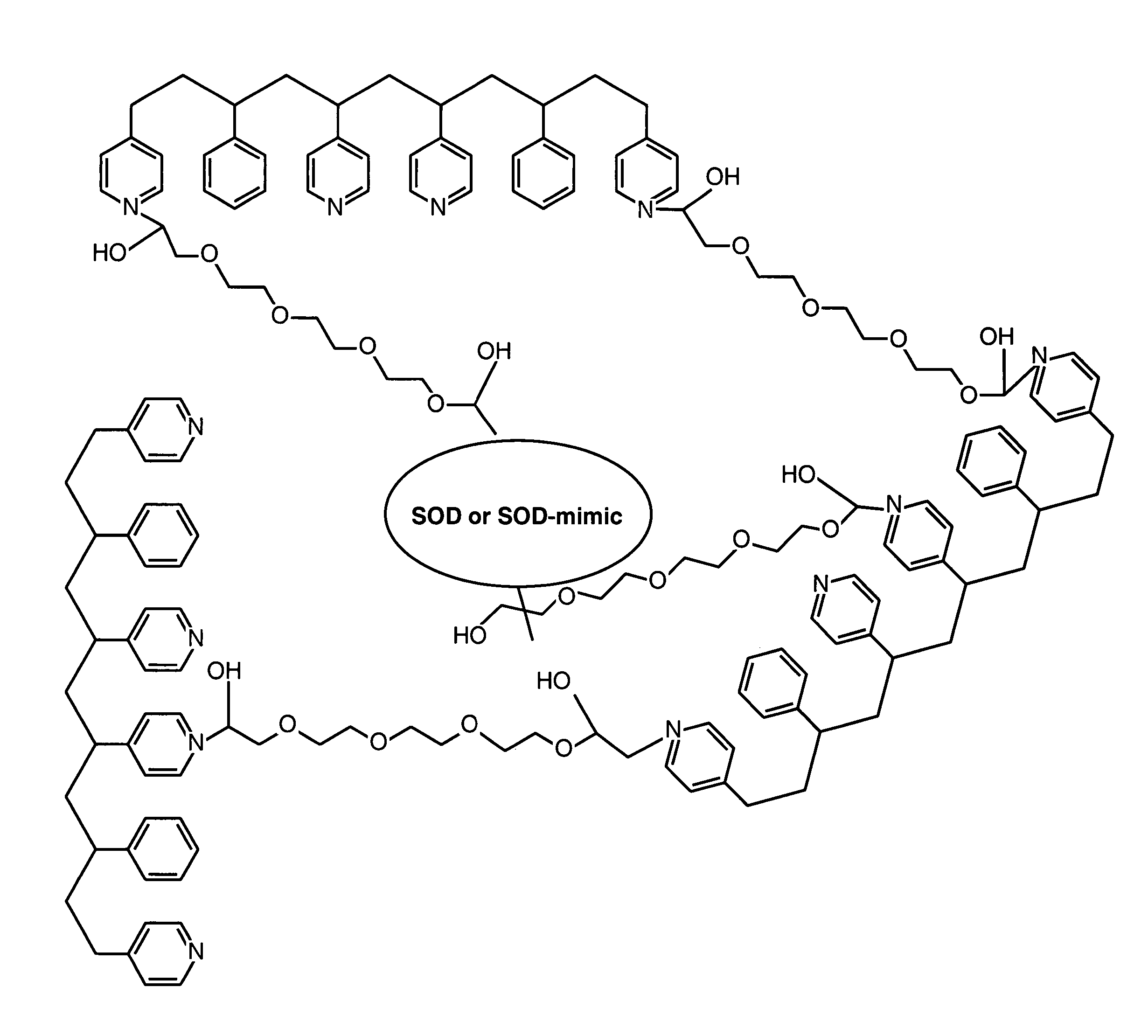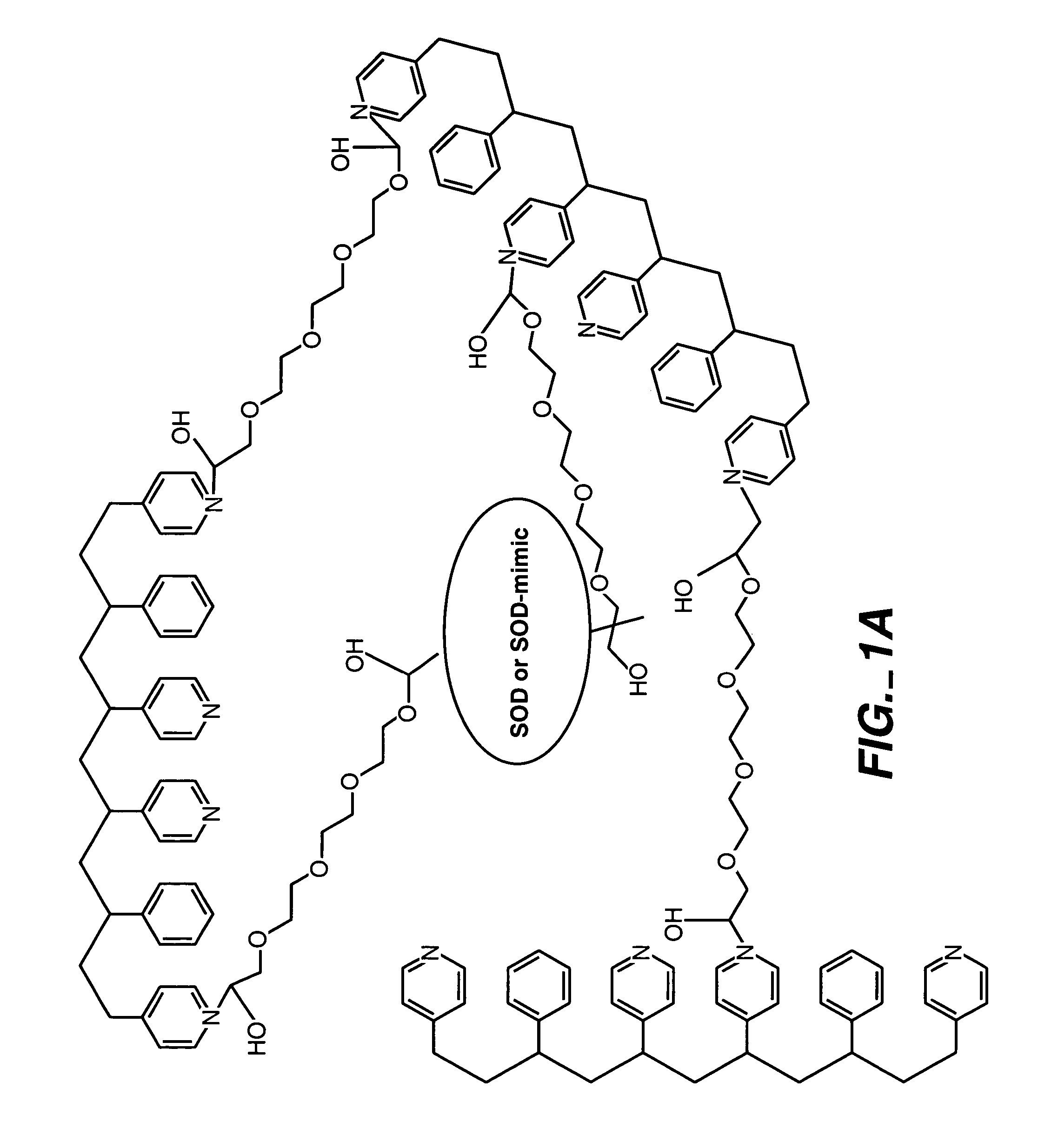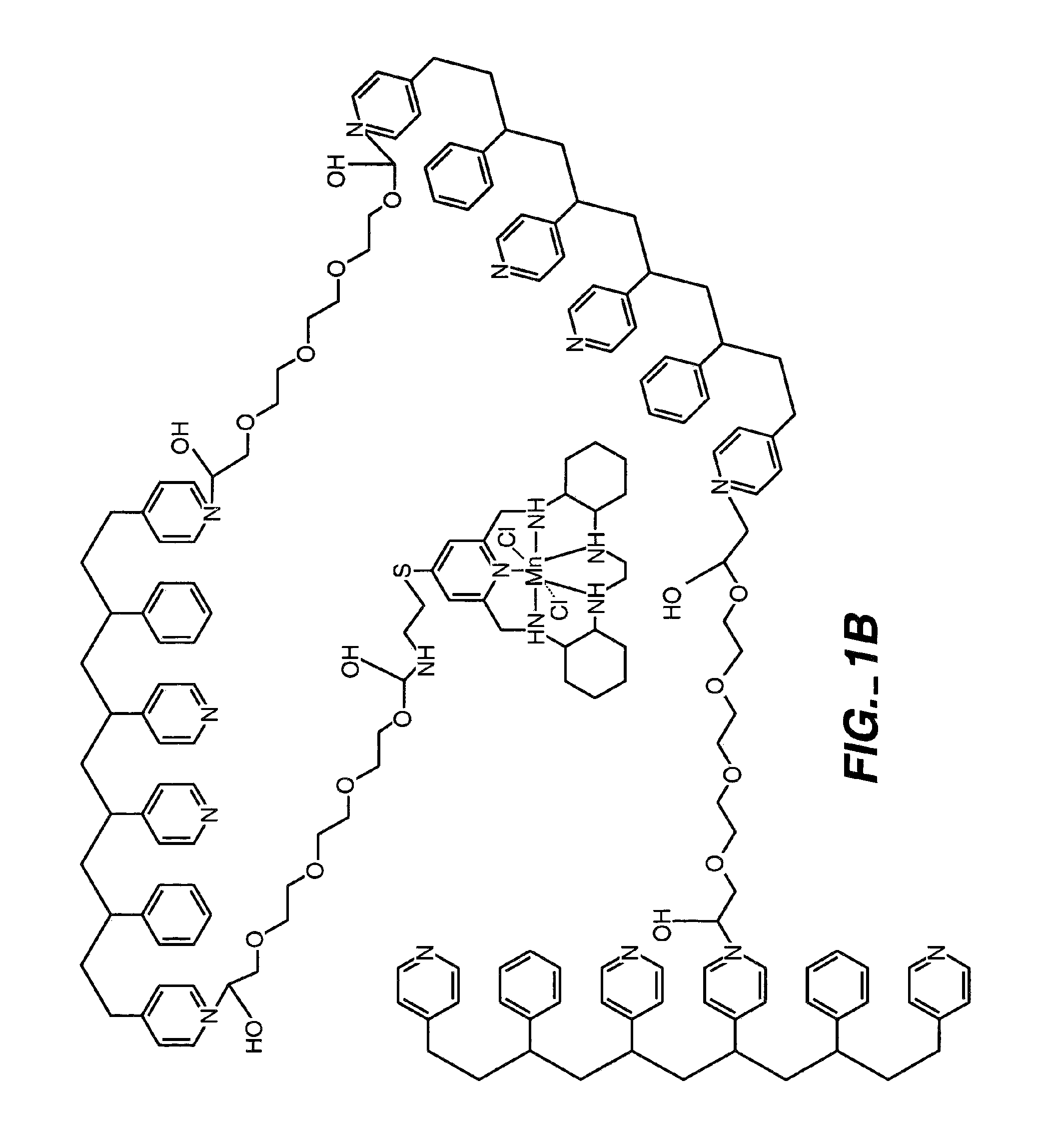Membrane suitable for use in an analyte sensor, analyte sensor, and associated method
a membrane and analyte technology, applied in the field of membranes, can solve the problems of non-linear relationship between the concentration of glucose in a sample fluid and the response of the amperometric glucose biosensor, may be complicated at high analyte flux, and achieve the effect of preserving or improving the sensor performance, facilitating linear responsiveness, and/or stability
- Summary
- Abstract
- Description
- Claims
- Application Information
AI Technical Summary
Benefits of technology
Problems solved by technology
Method used
Image
Examples
synthesis example 1
The Polymer of Formula 3
[0090]By way of illustration, an example of the synthesis of a polymer of Formula 3 above, is now provided. A solution of poly(4-vinylpyridine-co-styrene) (˜10% styrene content) (20 g, Aldrich) in 100 mL of dimethyl formamide (DMF) at 90° C. was stirred and 6-bromohexanoic acid (3.7 g) in 15-20 mL of DMF was added. The resulting solution was stirred at 90° C. for 24 hours and then poured into 1.5 L of ether, whereupon the solvent was decanted. The remaining gummy solid was dissolved in MeOH (150-200 mL) and suction-filtered through a medium-pore, fritted funnel to remove any undissolved solid. The filtrate was added slowly to rapidly stirred ether (1.5 L) in a beaker. The resulting precipitate was collected by suction filtration and dried at 50° C. under high vacuum for two days. The polymer had the following parameters: [n / (n+l+p)]×100%≈70%; [l / (n+l+p)]×100%≈80%; and [p / (n+l+p)]×100%≈10%.
synthesis example 2
The Polymer of Formula 5
[0091]By way of illustration, an example of the synthesis of a polymer of Formula 5 above, is now provided. A solution of poly(4-vinylpyridine-co-styrene) (˜10% styrene) (20 g, Aldrich) in 100 mL of anhydrous DMF at 90° C. was stirred, methanesulfonic acid (about 80 mg) was added, and then 2 g of methoxy-PEG-epoxide (molecular weight 5,000) (Shearwater Polymers, Inc.) in 15-20 mL of anhydrous DMF was added. The solution was stirred at 90° C. for 24 hours and 1,3-Propane sultone (2.32 g) in 10 mL of anhydrous DMF was added. The resulting solution was continuously stirred at 90° C. for 24 hours, and then cooled to room temperature and poured into 800 mL of ether. The solvent was decanted and the remaining precipitate was dissolved in hot MeOH (˜200 mL), suction-filtered, precipitated again from 1 L of ether, and then dried at 50° C. under high vacuum for 48 hours. The resulting polymer has the following parameters: [n / (n+m+l+p)]×100%≈10%; [m / (n+m+l+p)]×100%≈10%...
synthesis example 3
A Polymer having a Polyhydroxy Modifier B
[0092]By way of illustration, an example of the synthesis of a polymer having a polyhydroxy modifier B, as schematically illustrated below, is now provided. Various polyhydroxy compounds are known for having biocompatibility properties. (U.S. Pat. No. 6,011,077 of Muller, filed on Sep. 12, 1997.) The synthesis below illustrates how a modifier group having a desired property may be attached to the polymer backbone via a linker.
[0093]
[0094]In this synthesis, 1,3-propane sultone (0.58 g, 4.8 mmoles) and 6-bromohexanoic acid (1.85 g, 9.5 mmoles) was added to a solution of poly(4-vinylpyridine-co-styrene) (˜10% styrene) (10 g) dissolved in 60 mL of anhydrous DMF. The resulting solution was stirred at 90° C. for 24 hours and then cooled to room temperature. O-(N-succinimidyl)-N,N,N′,N′-tetramethyluronium tetrafluoroborate (TSTU) (2.86 g, 9.5 mmoles) and N,N-diisopropylethylamine (1.65 mL, 9.5 mmoles) was then added in succession to the solution. Af...
PUM
| Property | Measurement | Unit |
|---|---|---|
| temperature | aaaaa | aaaaa |
| volume ratio | aaaaa | aaaaa |
| pH | aaaaa | aaaaa |
Abstract
Description
Claims
Application Information
 Login to View More
Login to View More - R&D
- Intellectual Property
- Life Sciences
- Materials
- Tech Scout
- Unparalleled Data Quality
- Higher Quality Content
- 60% Fewer Hallucinations
Browse by: Latest US Patents, China's latest patents, Technical Efficacy Thesaurus, Application Domain, Technology Topic, Popular Technical Reports.
© 2025 PatSnap. All rights reserved.Legal|Privacy policy|Modern Slavery Act Transparency Statement|Sitemap|About US| Contact US: help@patsnap.com



